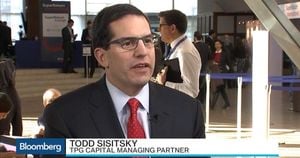The global semiconductor industry is seeing substantial growth and significant shifts, with total revenue reaching $626 billion in 2024, marking an impressive 18.1% increase from the previous year. This positive trend is projected to continue, with estimates indicating revenue could climb to $705 billion by 2025, according to reports from Gartner.
While the memory segment has been the dominant force behind this expansion, revenue from non-memory semiconductors also contributed to the growth, recording a 6.9% rise, which accounts for 74.8% of the total industry revenue. Among the top 25 semiconductor companies, 11 reported double-digit revenue increases, showcasing the industry's resilience and recovery.
Samsung Electronics has reclaimed its position as the world's premier semiconductor vendor, surpassing Intel, with revenues surging to $66.5 billion. Much of this growth can be attributed to the sharp recovery of memory prices, as the market rebounds from previous downturns.
Conversely, Intel's performance has been tepid at best, remaining almost stagnant with just 0.1% growth. Reports indicate their AI PCs and Core Ultra chipset have yet to significantly impact market share. After years of dominance, Intel now finds itself trailing behind Nvidia, which has skyrocketed to the Number 3 position. Nvidia's semiconductor revenue witnessed an astonishing 84% growth, reaching $46 billion, largely fueled by its strong involvement and innovation within artificial intelligence technologies.
The memory segment, particularly, has played a pivotal role in the semiconductor industry's expansion. Revenue from memory surged by 71.8% over the year, with both DRAM and NAND showing remarkable increases of 75.4% and 75.7%, respectively. Industry experts note the growing demand for high-bandwidth memory (HBM) as central to this growth, accounting for 13.6% of total DRAM revenue—which is expected to rise to 19.2% next year.
"The memory segment played a key role in the semiconductor industry’s expansion, with revenue soaring by 71.8% per cent in 2024," reported by IANS, reflecting the significant upward trend of the sector.
Innovation is also shaping the future of the industry. Micron Technology Inc. recently broke ground on their new HBM advanced packaging facility, the first of its kind in Singapore. Although operations for this facility are not expected to commence until 2026, it symbolizes Micron's commitment to boosting regional semiconductor capabilities and aligns with the anticipated demands resulting from AI growth. Sanjay Mehrotra, President, and CEO of Micron, stated, "With AI adoption proliferates across industries, the demand for advanced memory and storage solutions will continue to increase. This facility strengthens our position to address the growing AI opportunities."
The investment—which is expected to be around $7 billion—will initially create approximately 1,400 jobs, with plans to expand to 3,000 roles over time. The new facility will include modern technologies such as greenhouse gas abatement and water recycling, showcasing Micron's commitment to sustainability and innovation.
Despite these advancements and the industry-wide growth, not all companies are experiencing the same level of success. NXP Semiconductors recently provided a gloomy forecast, anticipating estimated first-quarter gross revenue to decline by around 10% to $2.83 billion, falling short of analysts’ projections of $2.92 billion. This indicates the persistent challenges posed by an oversupply of chips—which have heavily impacted sectors such as automobiles, particularly electric vehicles.
NXP's struggles are reflected across the semiconductor sector, where sluggish demand persists, especially outside of major markets like China, creating unexpected challenges for manufacturers.
Bloomberg Intelligence analyst Ken Hui remarked, "Rising global tensions might hurt the industry... European chipmakers may see...deeper and longer down cycles," emphasizing the precarious nature of the semiconductor market and how global events can significantly impact potential growth.
This duality within the industry—where some companies thrive due to rising demand for memory and AI technologies, and others grapple with persistent challenges—underscores the need for adaptability and innovation as the semiconductor market continues to evolve.
Overall, the resurgence of the global semiconductor industry reflects not only recovery from previous lows but also points to a transformative future, driven by advancements and increasing reliance on technology across sectors. The drive for innovation and adaptability will be pivotal for companies aiming to succeed amid shifting market dynamics.



